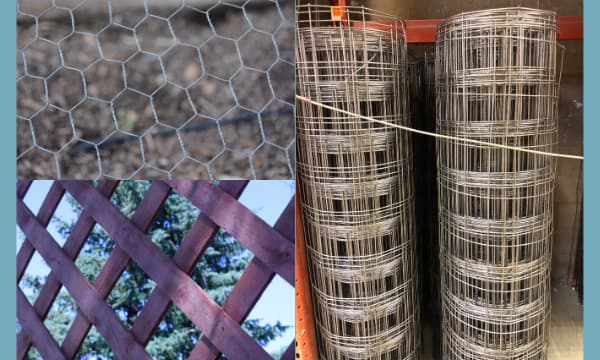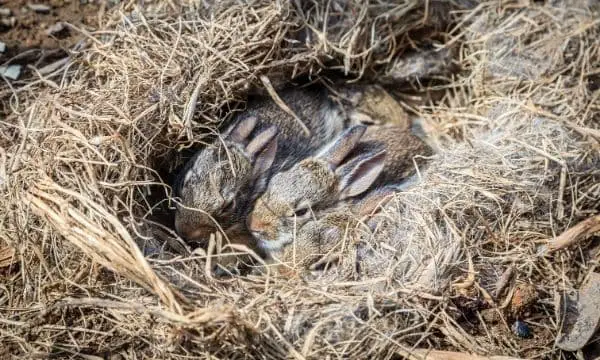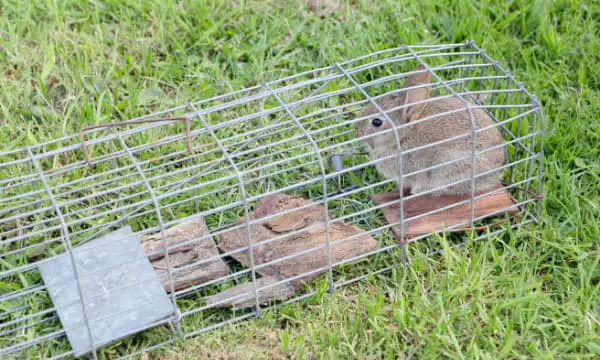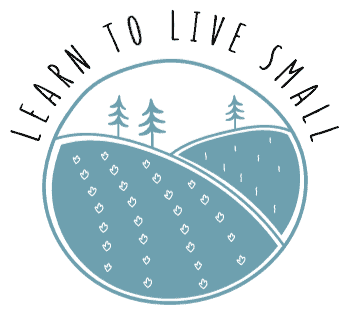Have you seen Peter Cottontail’s cousins around your yard? Perhaps you are seeing rabbit pellets around your property or a path that indicates something is getting under your shed? They are so stinking cute! However, are they burrowing under your shed? If they are, do you need to be concerned with it?
Rabbits can burrow under sheds. Sheds provide a dry place for a rabbit to nest and have relative protection from predators. It is recommended that you protect the area under any structure from wildlife including rabbits.
If you need the short version on keeping animals (including rabbits) from burrowing under your shed, hardware cloth is my favorite practical option available on Amazon here.
Does it Hurt Anything for Rabbits to Live Under Your Shed?
The rabbits around our house are on the skinny side, but they are still cute! They don’t even mess with the carrot tops or lettuce in my garden. I always heard that they can be quite destructive to a garden, but ours must be satisfied with all of the suburban grass available to them!
That said, rabbits are notorious chewers. Rabbits have been known to eat through electrical wires and more, so they are quite capable of causing actual damage to your shed. They prefer to eat greens that are as close as possible to their habitat for safety purposes, but the risk remains!
In addition, rabbits build tunnels that are called warrens. Rabbits prefer to live in colonies with other rabbits. Fun fact: A colony of wild rabbits are called a fluffle. They are able to build tunnels that can be quite extensive that are called a warren. What this means to your shed is that they are capable of impacting the ground around the foundation of your shed. The type of foundation you have matters here, but ultimately, they can weaken the ground under the shed through their tunneling around their habitat. It does not seem to be a common problem, however.
Layer in one last element to rabbits. They are prolific procreators! Little baby bunnies means any rabbits nesting under your shed can quickly become an infestation. Each bunny adds more risk to any potential problem.
Whether you are full-on homesteading or living it up in the suburbs, it is recommended to limit ALL wildlife from calling spaces under structures their home. Let’s chat more about that.
Prevent Rabbits From Burrowing Under Your Shed
The good news is that you can do a little work to prevent these furry cuties from burrowing under your shed. This is a relatively simple project you can accomplish in an afternoon. However, whatever solution you decide to use needs to account for their ability to build tunnels, as well.
Preventing rabbits from burrowing under your shed will require you to construct a barrier to prevent access. This is best done when the structure is built. If it already exists, and you are doing this after the fact, scroll down a bit to see how to handle rabbits that already live under the shed.

Back to the barrier. Essentially, you just need to screen the bottom of the shed to limit rabbits (and other critters) from accessing the area. It is optimal if you can install the barrier into the ground 12 inches, as well. This is even more critical if the rabbits have already made a home around your shed. It is likely they have tunnels already. You can simply staple netting to the shed using a staple gun like this one found on Amazon.
You can certainly use lattice and the like, but if the gaps in the material you choose are large, you will want to install another layer behind it. They key is to still allow airflow while keeping pests out. Rabbits can squeeze into the tiniest of places! Also, if you’re using lattice, it will last longer if you go for a PVC option. I do not recommend using PVC in a garden, but to protect a shed it is a solid option.
All of the options are available at your local hardware store, but here are some options available at Amazon:
You can always place a 1 x 4 strip horizontal along the bottom of the shed and top of the fresh barrier to keep your shed looking polished.
Remove Rabbits Under Your Shed
If you have rabbits nesting under your shed, you do not want to trap them under the shed. There are a few ways to approach this, and it is likely you will need to take on a few of these options combined to encourage them to move along.
Below is a photo of a rabbit’s nest. Whether you can see it or not under your shed, this is what they are doing under there, as well. Do you see the build up of nesting material surrounding the rabbits? They look cozy, but removing their nest can help move them out. You’ll want to do this when they are out foraging, though. Have you noticed that you see more rabbit activity at dusk and dawn? This would be the best time. You can simply move it, and read the area at the end of this article if you are interested in helping them just find a new home.

They also like the under part of a shed because it is likely fairly quiet and undisturbed. Since they prefer to leave the nest at dusk and dawn, make it uncomfortable for them during the day. Poke around under the shed with a broom. Jump around in the shed making a lot of noise out of nowhere. Have some fun. I generally don’t like torturing animals, but it’s worth a shot to help make them uncomfortable til they relocate.
Rabbits strongly use their sense of smell to navigate the world which makes them sensitive to smells. They also prefer to leave their nests in the dusk and dawn areas where the vision of their predators are not as keen. With that in mind, you can use rabbit repellents if you would like to give that a go. Simply shake sulfur or a repellent like these on Amazon around the shed.
You can also trap them to relocate them. Check out this trap option on Amazon if you would like to look into a trap further. You can then move them to another area, preferably where you felt the nest needed to go. That said, remember that rabbits are a social species, and there could be way more than you expect.
- Only Bugs Bunny likes carrots. Rabbits do like lettuce and carrot greens.
- Rabbits will figure out the trap situation, so it is important to trap as many as possible as fast as possible.
- Clean out nesting material and ensure there are no babies if possible. You want to prevent them from wanting to return.

Of course, you can also call a professional to handle the rabbits. Your local pest control company is likely to offer the service, but they can also refer you to a wildlife specialist if they do not.
How to Make a House for Wild Rabbits
We are all about working with permaculture principles as part of our homestead adventure. While we do not want rabbits under the structures, we do want to work WITH nature where we can. There are things you can do to provide a good habitat for rabbits while keeping your shed safe from any destruction they could cause.
Essentially, you are looking to provide a solid shelter for them to nest and build their warrens (extensive tunnels). When getting creative with your shelter solutions, keep these elements in mind. A shed provides a way for the soil to be sheltered from rain and limit predators that they have to deal with such as hawks.
They do all of this naturally in the wild, but if you want to relocate their nest and encourage another home, you can certainly help their cause. They prefer to live in brush or briar patches. If you have enough property that you can let a portion grow undisturbed, they can make a good home there. In particular, do you have a fence line or edge of a forested area that you can let grow up a bit? Brush materials or limb piles can also provide a safe haven that wild rabbits enjoy.
I hope you are able to seal off your shed from the start, but if not, I hope you are successful in solving for any potential rabbits hanging out under your shed!
